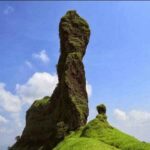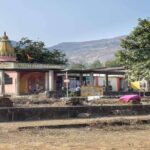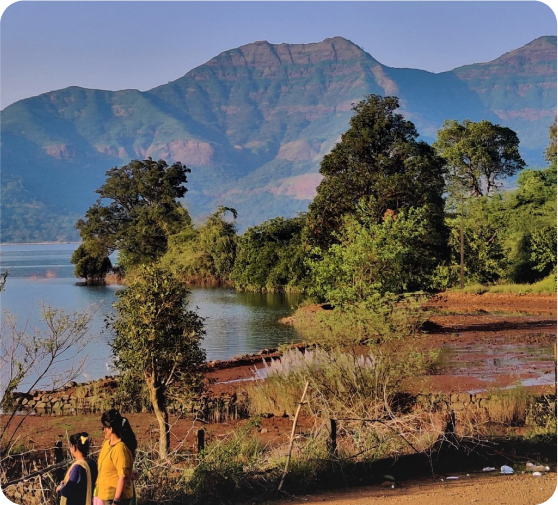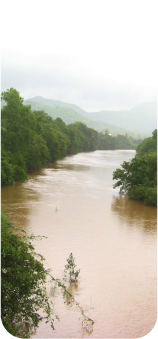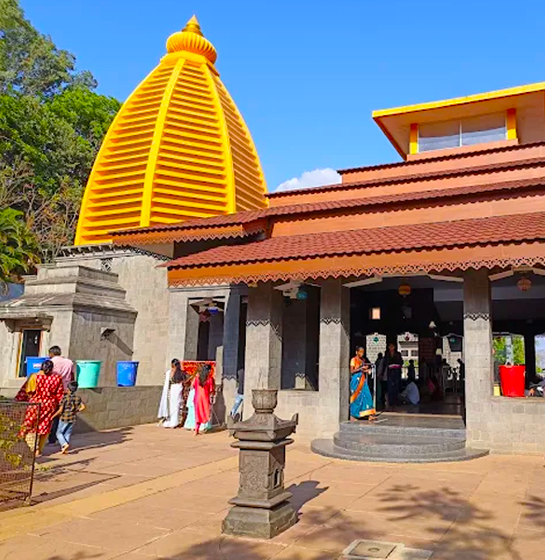Devarai
The Natural Splendor of Mulshi: Devarai – Palanjai of Ghutke, Mhatoba of Adgaon, Waghjai of Bhode
History of Devarai:
The tradition of Devarai (sacred groves) has been preserved since the Vedic times. The concept of Devarai is deeply rooted in faith, where the devout fear of the divine was effectively used for the protection and conservation of forests.
Importance of Devarai from an Environmental Perspective:
Since the forest is preserved in the name of the deity, there is no deforestation in these areas. Due to the dense nature of these groves, one can find tall trees, thick trunks, creeping vines, and a thick layer of foliage, home to various animals and birds. The perennial water springs within these forests provide water to humans and animals in the vicinity. These groves are rich in medicinal plants, and rare and endangered species of animals are only found here. Devarai also holds a treasure of rare saplings and seeds of high quality, along with providing pure oxygen.
For centuries, there has been a tradition of nature conservation in the Western Ghats. The Mahadev Koli community, among the local tribes, has preserved Devarai due to their faith in nature and the deities associated with it. Locals also refer to it as ‘Devarathi’ or ‘Devacham Ban.’ However, due to the growing fascination of the local youth with cities, increasing urbanization, and the buying and selling of land in surrounding villages, the concept of Devarai is facing challenges. Many of these groves, which range from a few gunthas to several acres, have been sold by farmers. Some major projects have put these Devarai on the verge of extinction.
In Pune district, most of the Devarai are found in the Western Ghats. The areas of Bhor, Velhe, Mulshi, Maval, Khed, Ambegaon, and Junnar have a significant presence of Devarai. Mulshi taluka once had about 150 Devarai, and today, around 70 to 80 still exist. Prominent Devarai in the region include Somjai of Bhor, Karanjai, Shirkai of Velhe, Ajivali of Maval, Shive, Bhorgiri of Khed, Bhimashankar of Ambegaon, and Ahup of Junnar, all of which continue to survive.
Information about Some Devarai:
Palanjai – Ghutke (Taluka Mulshi):
After passing Pimpri Point, on the way to Ghangad and Tailbaila forts, lies the Palanjai Devarai near the village of Ghutke. Whether it’s faith or superstition, people offer vows in this Devarai for childbirth. After a child is born, they offer a cradle to the deity. This Palanjai Devarai, with its dense forest, has been preserved by the locals till date.
Waghjai Deity Grove – Bhode (Taluka Mulshi):
The Waghjai Devarai in Bhode, located in the Mutha Valley, covers about 40 acres and hosts the greatest biodiversity. The villagers have carefully preserved and protected this grove.
Mhatoba Devarai of Adgaon:
Another Devarai near Bhambarde, it is known for its dense forest and biodiversity. Every year, a tall tree from this grove is cut down and worshipped, after which devotees carry a sacred stick (kawad) to the Mhatoba temple in Hinjewadi, followed by a procession.
Ajivali’s Serene and Distinctive Devarai – A Blend of Many Attractions:
Located on the border of Mulshi but within Maval taluka, this Devarai is a unique combination of natural beauty and various tourist attractions. Dense forest, towering greenery, a half-to-three-quarter-kilometer-long cliff, the vast blue waters of the Pavana reservoir, and views of forts like Tung, Lohgad, and Visapur make this Devarai special. The Waghjai temple here is renowned for fulfilling vows, attracting devotees from Mumbai, Pune, and other places. The temple is located on a cliff with an iron shed and a stone idol of the goddess. Behind the idol is a cave about eight feet high and 2.5 to 3 feet wide, the length of which remains unknown. This Devarai is a must-visit for bird watchers, wildlife enthusiasts, and tree lovers. Even on a scorching day, sitting under any tree, you’ll hear various birds calling out to you. The rare Giant Squirrel (Shekru), usually found in Bhimashankar forests, can be seen here. Monkeys, known for waiting to drink from the palm trees, are also a common sight. Spread over about 11 acres, this Devarai is rich with hundreds of trees, including rare species, and offers a unique experience of swinging on massive vines climbing up tall trees.
फोटो –
1) Adgaon (Taluka Mulshi) – Mhatoba’s Devarai

2) Bhode (Taluka Mulshi) – Waghjai’s Devarai
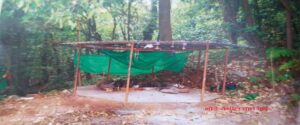
3) Kolawade (Taluka Mulshi) – The idol in the Valanjai sacred grove.
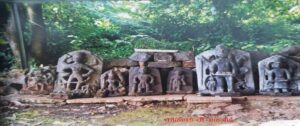

Tips for Hikers
Carry at least 3 liters of water and some snacks.
– Consider hiring a local guide for a more informative experience.
– Start early to avoid the midday heat.
admin
Published: October 9, 2024
